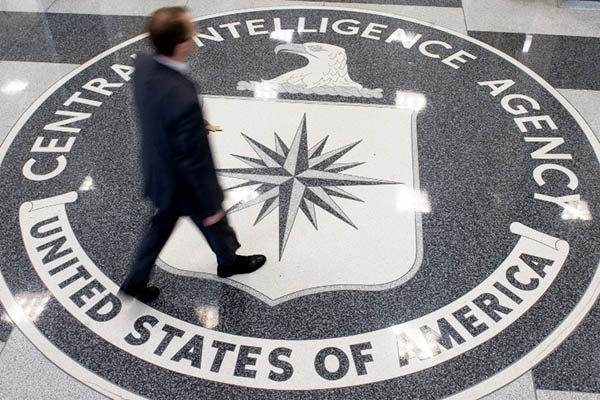
Saul Loeb—AFP
Four members of extremist organization were subjected to torture ranging from waterboarding to rectal feeding and beatings.
Four Al Qaeda members highlighted on Tuesday in the Senate report on CIA torture faced methods of interrogation ranging from waterboarding to the menacing whir of a power drill.
Abu Zubaydah, 43, a Saudi of Palestinian descent, currently held at Guantanamo Bay, was arrested in Pakistan in March 2002 in a raid in which he was shot and wounded. He allegedly oversaw Al Qaeda training camps and helped to plan the 9/11 attacks and other operations, including a plot to strike the U.S. embassy in Paris in 2001.
In August 2002, after 47 days in isolation, Zubaydah underwent a 20-day “aggressive phase of interrogation” in which he endured waterboarding “two to four times a day,” the Senate report said. During that time, he also spent a total of 266 hours crammed inside confinement boxes—one the size of the coffin, the other even smaller.
On day one of his interrogation, the report said, Zubaydah was shackled and hooded, stripped naked, and thrown against a wall. “Each time Abu Zubaydah denied having additional information, the interrogators would perform a facial slap or face grab,” it said.
Waterboarded for the first time, over two-and-a-half hours, “he coughed, vomited, and had ‘involuntary spasms of the torso and extremities’.” CIA cables said he frequently “cried,” “begged,” “pleaded” and “whimpered,” but repeatedly denied knowledge of pending threats to the United States.
Abd al-Rahin al-Nashiri, 49, a Saudi national captured in the United Arab Emirates in 2002, allegedly led Al Qaeda operations in the Gulf. Currently awaiting trail at Guantanamo Bay, he is said to be the mastermind of a suicide attack on the destroyer USS Cole in Yemen in 2000 in which 17 American sailors were killed.
The Senate report says Nashiri was subjected to the CIA’s “enhanced interrogation techniques” on at least four occasions. During one session, in December 2002, he was blindfolded by a CIA officer untrained in interrogation, who then put a pistol near his head and “operated a cordless drill” near his body.
An internal CIA investigation found that the officer, among others, slapped Nashiri “multiple times” behind the head, blew cigar smoke in his face, gave him a forced bath with a stiff brush, and implied his mother would be brought in and sexually abused before his own eyes. They also subjected him to “improvised stress positions” causing cuts and bruises, before a medical officer expressed concern that his shoulders could end up dislocated.
Ramzi Binalshibh, 42, a native of Yemen whose trial at Guantanamo Bay began two years ago, was captured in Pakistan a year to the day after the 9/11 attacks that he allegedly helped facilitate. Initially cooperative under questioning, CIA headquarters nevertheless insisted Binalshibh be subjected to enhanced interrogation techniques, the Senate report said.
For about three weeks in 2003, he underwent “sleep deprivation, nudity, dietary manipulation, facial holds, attention grasps, abdominal slaps, facial slaps, and walling.”
Enhanced interrogation techniques were used “for behavior adjustment purposes” when Binalshibh failed to address his interrogator as “sir,” showed a “blank stare” or complained of stomach pain. Contrary to CIA policy, Binalshibh was kept in total darkness to heighten his sense of fear, the Senate report said.
Long-term isolation led to such psychological symptoms as visions, paranoia, insomnia and self-harm attempts, it added.
Khalid Sheikh Mohammed, 49 or 50, is widely regarded as the main architect of the 9/11 attacks and the mastermind of several Al Qaeda operations including the 2002 Bali nightclub bombing. Captured in Pakistan in March 2003, he remains at Guantanamo Bay where he faces the death penalty if convicted of war crimes and murder.
Within minutes of the start of his interrogation, “KSM”—as the Senate report calls him—“was subjected to facial and abdominal slaps, the facial grab, stress positions, standing sleep deprivation [with his hands at or above head level], nudity and water dousing.” That was followed by “rectal rehydration”—intended to “clear a person’s head” and get a detainee to talk—in a session during which he gave bogus information about two people who the CIA would eventually detain and find innocent.
Mohammed underwent 15 separate waterboarding sessions over two weeks in March 2003, with the first lasting a half-hour, or 10 minutes longer than recommended, followed by “a horizontal stress position” unapproved by CIA headquarters. At one point, interrogators used their hands “to maintain a one-inch deep ‘pool’ of water over KSM’s nose and mouth” to make it impossible for him to ingest all the water being poured over him. Mohammed also faced seven and a half days of sleep deprivation, mostly in a standing position, and a picture of his sons was hung in his cell to induce him to cooperate.
